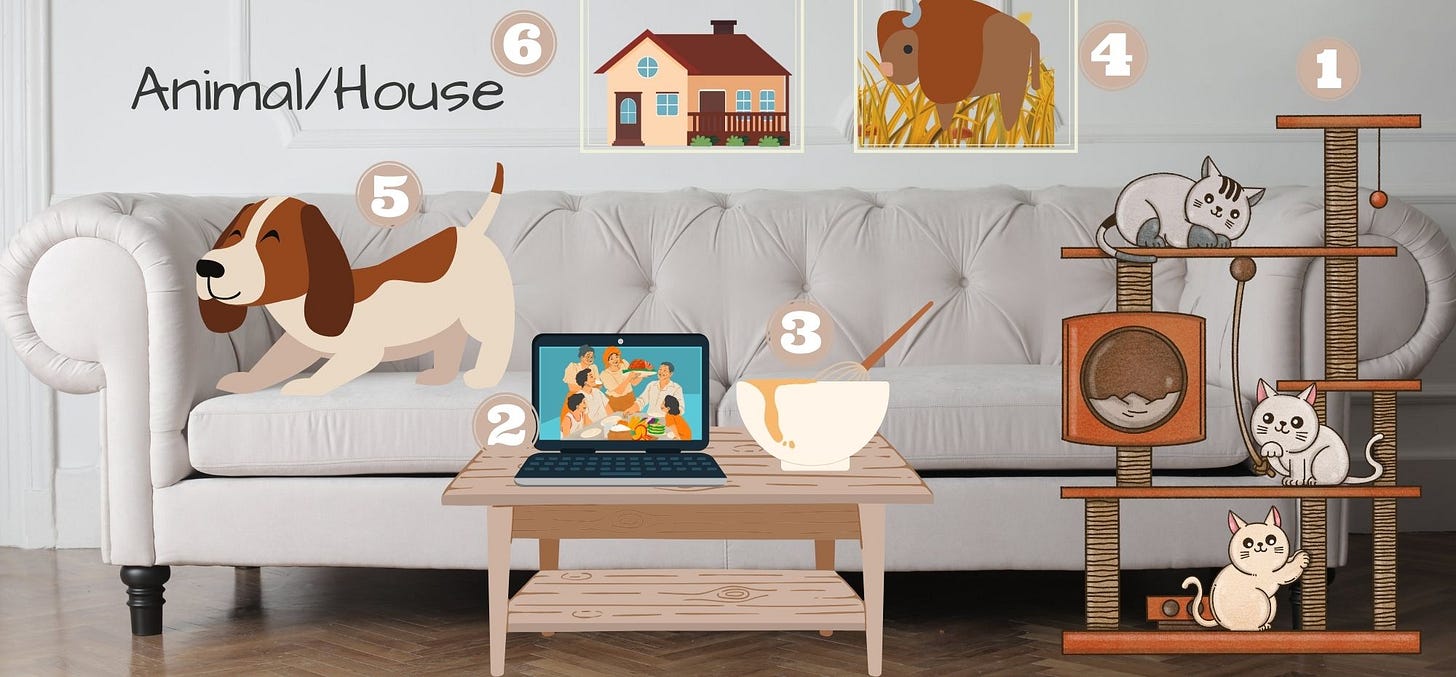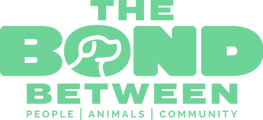
Joe poured crushed cans into the expansive metal cage as I filmed the event for a social media story I had planned in my head. Cans spilling. Aluminum clinking. The sign for the Northwoods Humane Society as a backdrop for their fundraiser. But thoughts are like dreams, stirring new directions.
As our cans settled noisily into nooks and crannies, a memory emerged from my occipital lobe. It was of my late Uncle Ray - a doppelganger of Dr. Bunsen Honeydew, the Muppet puppet with a bald, rounded head and black-framed glasses. Ray and Joe became fast friends when we lived near his summer cabin nestled in the wooded dunes of Lake Michigan. When the weather warmed and the cabin became habitable, Ray and Aunt Dolly would travel 80 miles to the tiny get-away with two feet of countertop space for Ray to spend the weekend indulging his passion for baking. Joe and I were often invited to join in the consumption of his lavish creations.
One afternoon as we sat in the screened porch, plates heaped with lattice-topped blueberry pie, Ray challenged Joe to a game of golf. To the victor would go the aluminum cans they’d retrieve from the waste receptacles at each tee box. Michigan law requires a 10-cent deposit on cans as incentive to return them to retailers for refunds. Not everyone is moved to participate. Joe and Ray envisioned treasure to be found in the trash. Game on!
Eighteen holes later, Ray ceremoniously handed Joe a dripping bag of cans. Four hours on the course and a slightly better score than Ray netted Joe a $6.20 prize!
My state does not have a can return law, but metal recyclers willingly pay collectors. The current local rate for aluminum is $0.50 per pound. It’s not gold by any means, but cans can be exchanged for cash. Those “can cages” that dot parking lots of fire departments, bars, and non-profit organizations across Minnesota are passively raising funds come rain or snow for scouting organizations, scholarships, community food shelves, and animal rescue.
Non-profit organizations thrive on cash. Cash falls in the category of “unrestricted” funds. That means, non-profits can use the money where it’s needed rather than where the donor or grant prescribes.
Organizations that buy pet or people food can turn $1.00 of cash into $6.00 to $8.00 of food through food bank systems. Our eight pounds of cans were worth $4.00. That $4.00 could be used by a non-profit to buy $32.00 of food. If there were $800.00 worth of cans in the cage, that could equate with $6,400 worth of pet or people food. Will it feed all the animals in the shelter’s care for a year? No. Does it help? Yes! If Uncle Ray were alive today, I’d play golf just to win more cans!
Got cans? Consider donating your deposit refunds, payment from a recycler, or empty cans to a local animal shelter, community food shelf, or other non-profit. Cans equal unrestricted cash! As in the word’s of Lucy from the Peanuts gang, “Boy, I love the beautiful sound of cold, hard cash, that beautiful sound…”
1. The creativity that can flow from talented brains fuels my joy. Check out these snuffle mat “presents” by McFloofypants_Creations, a woman-owned, small business. So many whimsical, colorful pockets and loops for hiding treats and kibble to keep your cats entertained.
2. One of my friends passed along this recommendation for Impact Parents – an online community for caregivers of ADHD kids and teens. She said, “They have helped us to cope and see things in a whole new light.” On their website you’ll find free access to award-winning blogs, newsletters and podcasts, fee-based coaching programs, and support. My friend and her family joined a class and support group.
3. Do your kids know how to open the refrigerator but not how to boil a pot of water? Give them the gift of self-sufficiency by teaching them to cook. Parenting Teens & Tweens created a blog with 15 easy recipes and plenty of tips to help parents & caregivers help kids learn. I was impressed to see a link to a knife skills video!
4. Did you know that North American grasslands are disappearing at a rate greater than the Amazon Rainforest? As they go, so too goes biodiversity and all the natural climate solutions that could help fight climate change. South Dakota Public Broadcasting produced a show that explores climate resiliency, cultural foundations and economic stimulation. While I listened to The restoration of the American buffalo | SDPB, I couldn’t help but think that the word of the year for 2024 should be “partnerships.”
5. How do you know if you are your dog’s favorite human? Here’s a 3-minute read from Like Cats and Dogs with five signs related to behavior and body language. Reciprocating their affection and loyalty will help create a deep and lasting bond.
6. I’m no longer a professional designer, but I never stop dreaming. One of my favorite architects is Christine Bleyhl, AIA, NCARB of PLAND Design & Build. I got to know Christine when we worked together promoting green homes and remodeling. I know she’s got the chops to design beautifully and plan sustainably. I suggest you take a scroll through her portfolio!
Something magical happened when 2023 gave way to 2024. SecondHand Hounds became The Bond Between. Ten years after Rachel Mairose founded one of Minnesota’s premier dog rescues, she changed the organization name to reflect their efforts to support both ends of the leash. The Bond Between will continue to provide safe shelter, veterinary care and the daily needs for animals in their rescue/adoption program.
The name change reflects the programming they’ve added to celebrate and support the special bond between people and pets. Social services, like behavior training programs and the pet food shelf where I volunteer, help people care for their pets while also helping to prevent animal surrender. Volunteers bring companion animals to nursing homes, assisted living facilities and schools. Others lead the BB Scouts youth education program. The creativity of The Bond Between staff and volunteers is never ending. Their appreciation for your support is equally so.
Before you go, here are a few posts I know others enjoyed.





